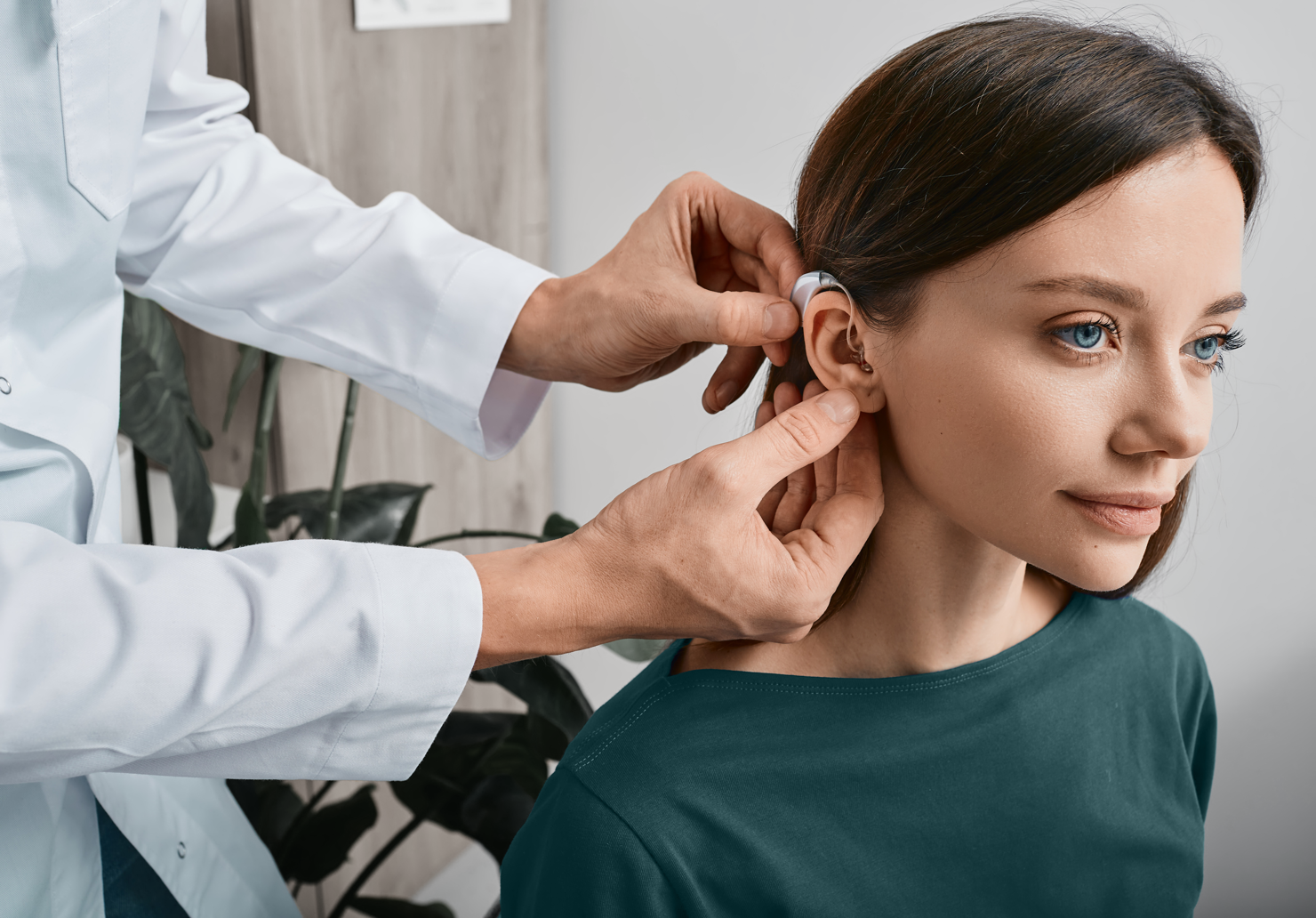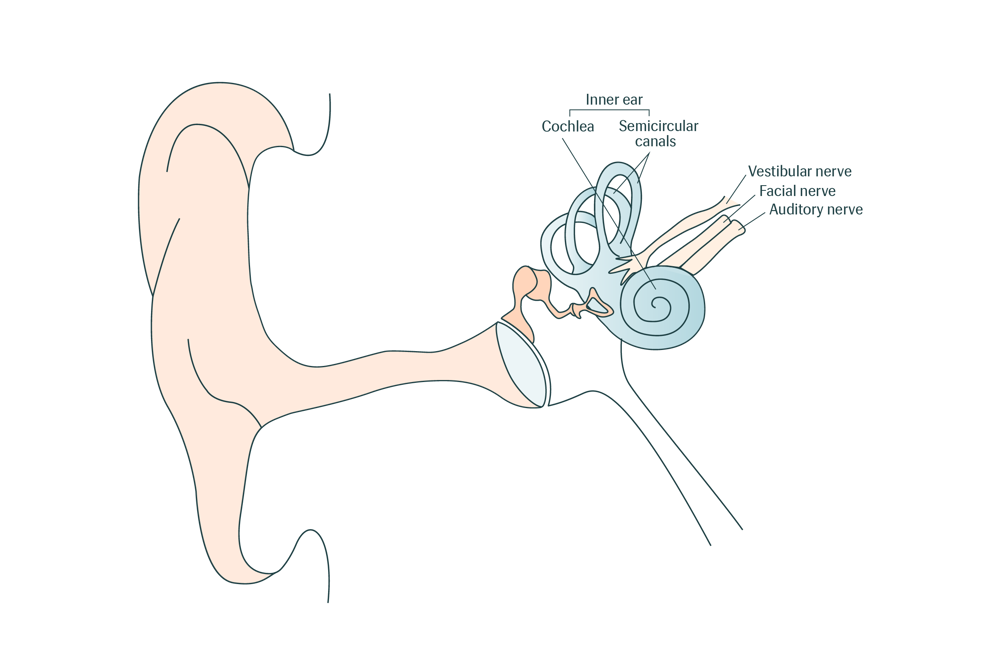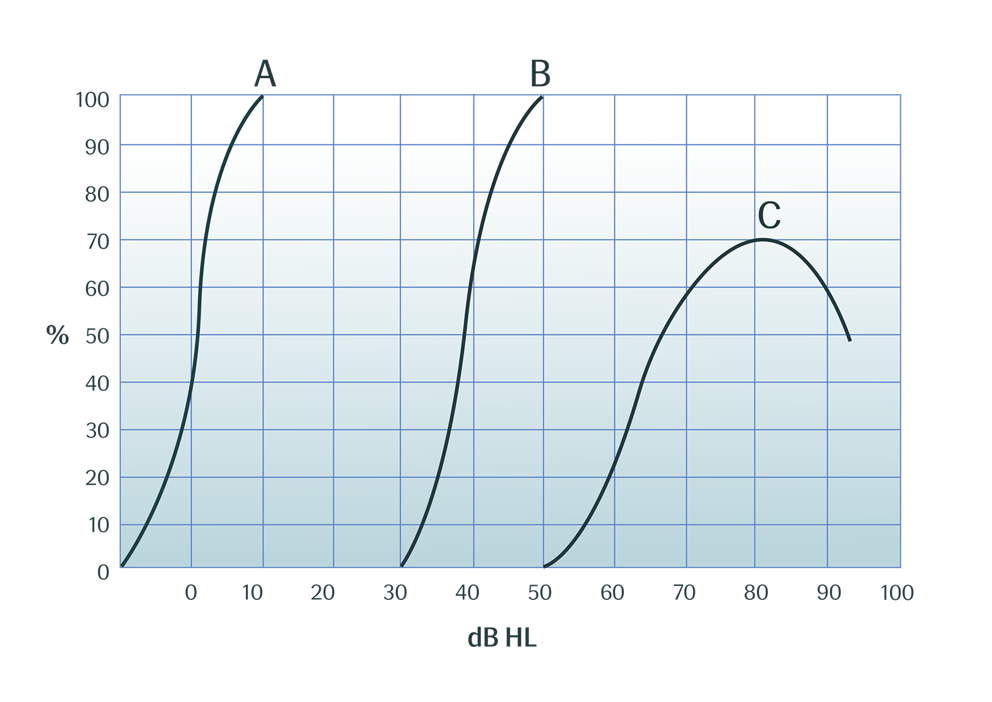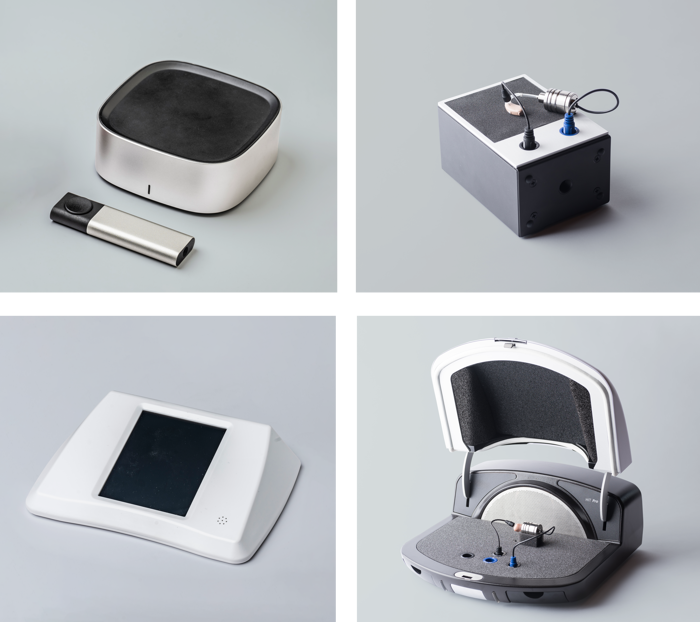- Cochlear pathologies can affect both the inner ear and the vestibulocochlear nerve, leading to different types of hearing loss.
- Unilateral tinnitus, dizziness, and poor speech discrimination can be signs of retrocochlear hearing loss
- Speech recognition testing can help differentiate between cochlear and retrocochlear losses, with retrocochlear loss showing poor correlation with hearing loss severity.
- The SISI test and acoustic reflexes are valuable tools for distinguishing between cochlear and retrocochlear pathologies


Cochlear pathologies affect the inner ear, which is responsible for converting sound waves into signals that the brain can interpret as sound. Examples of cochlear pathologies include noise-induced hearing loss or presbycusis (age-related hearing loss). Depending on how long an individual has presented with this hearing loss, and the severity of loss, hearing aids are often an appropriate treatment option for those with cochlear pathologies.
A retrocochlear hearing loss is one that originates beyond the cochlea and affects the vestibulocochlear nerve or central auditory system. A retrocochlear hearing loss can be caused by a variety of pathologies including infections, demyelinating diseases like multiple sclerosis, auditory neuropathy, or acoustic neuromas. This type of hearing loss is often difficult to diagnose as it can present similarly to a cochlear loss.
Patient Presentation
Every appointment should start with a detailed patient history. Although elusive, there are certain symptoms to listen for during your patient history that may alert you to a retrocochlear loss. These include unilateral tinnitus, dizziness, asymmetric or unilateral hearing loss with no known case, and poor speech discrimination regardless of hearing loss severity
While we’ll discuss other methods of differentiating between cochlear and retrocochlear losses, signs can be present during your typical audiometric test battery. Both cochlear and retrocochlear losses present as sensorineural hearing loss (SNHL), however, the two pathologies can present differently during speech audiometry – specifically during speech recognition testing. In a patient with a retrochochlear pathology, speech discrimination scores may not correlate with the severity of their loss – for example, poor speech discrimination with a mild hearing loss.
Additionally, when the intensity of speech stimuli is increased, scores may decline in individuals with a retrocochlear loss. This is referred to as speech recognition rollover. An example of positive roll over speech discrimination scores is highlighted below. Notice how speech scores decline as presentation level increases.

SISI - Short Increment Sensitivity Index
The Short Increment Sensitivity Index (SISI) is a measure of intensity discrimination that assesses an individual’s ability to recognize increases in intensity during a series of pure tone bursts. These increases are presented in 1 dB increments and the individual is asked to respond when they detect an intensity change. This was designed to assist in the determination of where the hearing impairment arose.
During the test, the patient is asked to listen to a series of tones that increase in volume by a small amount each time. In essence, if the patient can hear the increase in volume, this indicates that their cochlear function is intact. During the SISI test, the patient is asked to listen to a series of tones that increase in volume by a small amount each time. The tone is typically presented at a fixed frequency, such as 1000 Hz, and the increment in volume is usually around 1 dB. The patient is then asked to indicate whether they can detect the change in volume. The percentage of correct responses can be interpreted to indicate cochlear vs retrocochlear loss. A score of 70%-100% correct would indicate a cochlear loss while a score of 20% or below is indicative of a retrocochlear loss. It should be noted that scores of 20 – 70% are considered inconclusive. Thus, other measures, like acoustic reflexes or acoustic reflex decay should be used to validate results and offer further clarity on hearing loss site of lesion.
The SISI is one of the few behavioral tests available that is able to provide differential diagnostic data on cochlear and retrocochlear pathologies. It is also a relatively quick assessment. With the Measure software, the SISI can be easily incorporated into your test battery. Simply add the SISI into your workflow and click start – the test will begin and scores will automatically be populated based on patient responses. Clinicians are even able to personalize their experience to suit clinic needs.
Acoustic Reflexes
Acoustic reflex testing is another method used to evaluate cochlear function. During the test, a loud sound is presented to the patient, and the muscles in the middle ear contract in response. As this reflex can be ellicited and measured with a tympanometer , it is an easy and accessible option for any audiology clinic. With hearing loss as a result of a cochlear pathology, the acoustic reflex may be present if hearing loss severity is 50 dB HL or better. As hearing loss severity increases, so does that chance of an abnormal acoustic reflex – even in the absence of retrocochlear pathology.
In individuals with hearing loss related to a retrocochlear pathology, acoustic reflexes may not agree with the severity of hearing loss. For example, in an individual with a mild hearing loss and absent or elevated acoustic reflexes, retrocochlear hearing loss should be considered.
Acoustic Reflex Decay
Reflex decay testing is a variation of acoustic reflex testing that is used to evaluate cochlear function in more detail. Like with acoustic reflexes, the contraction of the stapedius muscle is measured in response to a loud pure tone. During acoustic reflex decay testing, the tone is presented over a longer period of time. The contraction of the stapedius muscle is measured during the entirety of the presentation to assess the ability of the muscle to maintain contraction. In other words, does the reflex remain for the entire length of the tone presentation? Abnormal acoustic reflex decay often presents as a decrease in contraction by about 50% which can be indicative of retrocochlear pathology.
Distinguishing between cochlear and retrocochlear pathologies is important for accurate diagnosis and appropriate treatment of hearing loss and any possible underlying conditions. The SISI, acoustic reflexes, and reflex decay testing are useful tools to assist in your differential diagnosis. It should be noted that each of these diagnostic tools do have limitation and should be used in combination with one another as well as other specialized testing like Auditory Brainstem Response testing and imaging, like MRI.
Explore the Suite of Measure Solutions
Our comprehensive suite of hardware and software solutions is designed to revolutionize the field ofaudiology. Whether you are looking for an audiometer, an otoscope, a tympanometer or other equipment, Auditdata Measure can help you provide best care experience to your patients.

Other Blogs You Might Enjoy:
Don't Miss Out On the Latest Insights On Audiology
Sign up today to receive exciting updates, tips, and the latest newsletters from Auditdata.
Resources:
⭐️ Audiologic evaluation in cochlear versus retrocochlear lesions.
⭐️ A clear path to better hearing
⭐️ https://www.auditdata.com/audiology-solutions/measure/short-increment-sensitivity-index-sisi/
⭐️ The Short Increment Sensitivity Index (SISI): An Auditory Discrimination Application?
⭐️ Acoustic Reflex Threshold (ART) Patterns: An Interpretation Guide for Students and Supervisors









